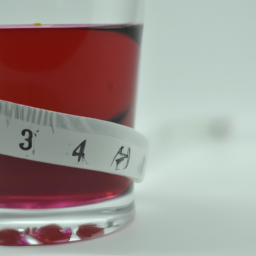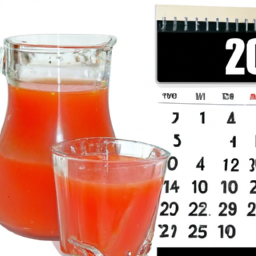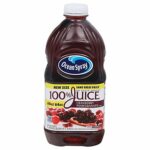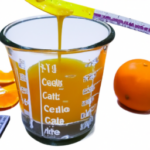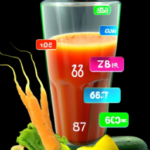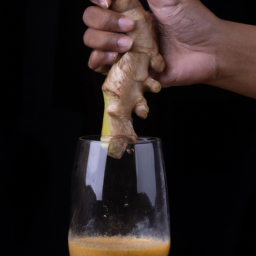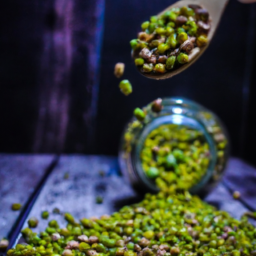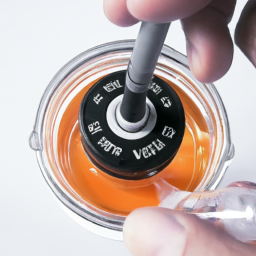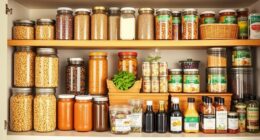Ah, cranberry juice – a popular drink often associated with holiday seasons and urinary health. But have you ever stopped to consider the true carbohydrate content in this tart yet refreshing beverage?
As someone who is conscious about my carbohydrate intake, I was curious to learn more about the carb content of different types of cranberry juice and how it fits into a low-carb diet.
Carbohydrates are an essential macronutrient that provide our bodies with energy, but not all carbs are created equal. Some carbs, like those found in fruits and vegetables, are considered ‘good’carbs because they contain fiber and other nutrients that support our overall health. On the other hand, ‘bad’carbs like refined sugars and white flour can contribute to weight gain and chronic diseases when consumed in excess.
With this in mind, it’s important to understand the carb content of the cranberry juice we consume to make informed choices about our diets.
Key Takeaways
- Pure cranberry juice has fewer carbs than sweetened varieties
- Sweetened cranberry juice can be high in carbs
- Unsweetened cranberry juice, cranberry extract supplements, and low-carb cranberry juice blends are low-carb alternatives
- Incorporating low-carb alternatives into your diet can help you enjoy the health benefits of cranberries without consuming too many carbs
Understanding Carbohydrates
You may be wondering how many carbs are in that glass of cranberry juice you’re holding, but understanding carbohydrates is key to knowing the answer. Carb counting is a popular method used by individuals who want to monitor their carbohydrate intake. It involves tracking the amount of carbohydrates consumed in a day and adjusting the intake accordingly.
However, it’s important to note that not all carbohydrates are created equal. Some carbs, like those found in fruits and vegetables, are considered healthy because they have a low glycemic index. This means that they are digested slowly, which helps to keep blood sugar levels stable.
On the other hand, carbohydrates found in sugary drinks like soda and fruit juice have a high glycemic index. They are digested quickly, causing a rapid increase in blood sugar levels. This can lead to a crash later on, leaving you feeling tired and hungry.
So, when it comes to cranberry juice, it’s important to choose a variety that is low in added sugars and high in fiber to help slow down digestion and keep you feeling full for longer. With this in mind, let’s take a look at the different types of cranberry juice available.
Types of Cranberry Juice
There are various options of cranberry juice available, such as the classic cocktail blend and the unsweetened version that offers a more tart flavor profile. For instance, my friend prefers the unsweetened variety of cranberry juice as he finds it more refreshing and less sugary. When choosing cranberry juice, it is important to consider the flavor options and nutritional value.
To help compare the nutritional value of different cranberry juice options, here is a table outlining the typical serving size and carbohydrate content of various types of cranberry juice:
| Cranberry Juice | Serving Size | Carbohydrate Content |
|---|---|---|
| Classic Cocktail Blend | 8 oz | 30 g |
| Unsweetened Cranberry Juice | 8 oz | 10 g |
| Cranberry Juice Cocktail (25% Juice) | 8 oz | 30 g |
It is important to note that these values may vary depending on the brand and specific product. In the next section, we will explore the carb content of pure cranberry juice.
Carb Content of Pure Cranberry Juice
When opting for pure cranberry juice, it’s essential to be mindful of the sugar content. While cranberries themselves are low in sugar, many commercial cranberry juice products contain added sugars and high fructose corn syrup. However, pure cranberry juice with no added sugars is a great source of health benefits and nutritional value.
Pure cranberry juice is packed with antioxidants, including vitamin C, vitamin E, and polyphenols. These antioxidants help protect the body against free radical damage and inflammation, which can lead to chronic diseases such as heart disease, cancer, and diabetes. Additionally, cranberry juice has been shown to aid in urinary tract health by preventing the adhesion of harmful bacteria to the bladder walls.
Overall, pure cranberry juice is a great addition to a healthy diet, as long as you choose a product with no added sugars.
Moving onto the next section about the carb content of cranberry juice cocktail, it’s important to note that while cranberry juice cocktail may still contain some health benefits, it typically contains much higher levels of added sugars and carbohydrates compared to pure cranberry juice.
Carb Content of Cranberry Juice Cocktail
I’ve been curious about the carb content of cranberry juice cocktail, so I did some research.
The three key points to consider when looking at the carb content of this drink are the serving size, total carbohydrates, and sugar content.
It’s important to understand these factors in order to make informed decisions about incorporating cranberry juice cocktail into your diet.
Serving Size
To get the full picture of how many carbs are in cranberry juice, it’s important to note that a recommended serving size is similar to a small can of soda. Here are a few things to keep in mind when it comes to portion control:
- Consuming too much sugar can lead to weight gain and other health issues.
- Overconsumption of cranberry juice may also lead to digestive problems such as diarrhea.
- Be mindful of the added sugars in cranberry juice cocktails as they can increase the carb count significantly.
- Drinking water alongside cranberry juice can help control portion sizes and reduce overall carb intake.
It’s important to be aware of serving sizes and to practice portion control when consuming cranberry juice.
In the next section, we’ll take a closer look at the total carbohydrate content in cranberry juice.
Total Carbohydrates
The amount of carbohydrates present in cranberry juice can significantly impact one’s daily intake of sugars and affect overall health. Carb counting has become a popular trend among health-conscious individuals, and for a good reason. Knowing the total carbohydrates in a serving of cranberry juice can help one make informed dietary decisions and maintain stable blood sugar levels.
According to the U.S. Department of Agriculture (USDA), one cup of unsweetened cranberry juice contains approximately 30 grams of total carbohydrates, including natural sugars and fiber. This amount is equivalent to two servings of carbohydrates, as defined by the American Diabetes Association (ADA), and represents a significant portion of the daily recommended carbohydrate intake for most people.
Carbohydrates are an essential nutrient that provides the body with energy, but not all carbs are created equal. Understanding the glycemic index of foods, including cranberry juice, can help one choose healthier options and reduce the risk of chronic diseases such as diabetes and heart disease. The glycemic index measures how quickly a food raises blood sugar levels and ranks carbohydrates on a scale from 0 to 100. High glycemic foods, such as sweetened cranberry juice, can cause a rapid spike in blood sugar levels and increase the risk of insulin resistance. In contrast, low glycemic foods, such as unsweetened cranberry juice, are digested slowly and promote stable blood sugar levels.
Understanding the total carbohydrates and glycemic index of cranberry juice can help one make better dietary choices and improve overall health. With that said, let’s move on to the next section and discuss the sugar content of cranberry juice.
Sugar Content
If you’re looking for a drink to satisfy your sweet tooth, you might want to think twice before reaching for that tart red beverage. Cranberry juice may seem like a healthy option, but its sugar content can be surprisingly high. In fact, a cup of sweetened cranberry juice cocktail can contain up to 30 grams of sugar, which is equivalent to about 7 teaspoons of sugar. This is almost as much sugar as a can of soda!
Reducing sugar intake is important for maintaining overall health, as excessive sugar consumption has been linked to a variety of health problems, including obesity, type 2 diabetes, and heart disease. It’s important to be aware of the sugar content of cranberry juice, as well as other sugary drinks and foods, and try to limit your intake. Instead, consider opting for unsweetened cranberry juice or diluting sweetened cranberry juice with water to lower the sugar content.
Moving on to the next section, let’s take a closer look at the carb content of sweetened cranberry juice.
Carb Content of Sweetened Cranberry Juice
With its sweet and tangy flavor, cranberry juice packs a sugary punch, containing around 30 grams of carbs per serving. However, the exact amount of carbs in cranberry juice can vary depending on whether it’s sweetened or unsweetened.
Unsweetened cranberry juice has fewer carbs than sweetened varieties, making it a healthier option for those watching their carb intake. If you’re looking to add cranberry juice to your diet but want to keep your carb intake low, there are several low-carb alternatives available.
These include unsweetened cranberry juice, cranberry extract supplements, and low-carb cranberry juice blends. Incorporating these options into your diet can help you enjoy the health benefits of cranberries without consuming too many carbs.
Low-Carb Alternatives
Incorporating low-carb alternatives into your diet can help you enjoy the tangy and sweet flavor of cranberry without compromising your carb intake. While sweetened cranberry juice can be high in carbs, there are many low-carb beverage options available in the market.
Unsweetened cranberry juice and cranberry juice cocktail, for example, are both great alternatives that are lower in carbs than sweetened juice. Additionally, there are also many low-carb cranberry drink mixes available that can be easily prepared at home.
When looking for low-carb alternatives, it’s important to balance taste and nutrition. While some low-carb options may have less sugar, they may also have less nutritional value. It’s important to read labels and choose options that are not only low in carbs but also rich in vitamins and minerals.
Incorporating low-carb cranberry options into your diet can help you enjoy the many benefits of cranberry juice without the added carbs. Moving onto the subsequent section about the benefits of cranberry juice, it’s important to note that cranberry juice is not only tasty but also offers many health benefits.
Benefits of Cranberry Juice
If you’re looking for a low-carb alternative to sugary drinks, cranberry juice may not be the best option. However, don’t discount the benefits that cranberry juice can bring to your health. In fact, cranberry juice has been touted for its many health benefits, including its antioxidant properties.
Here are some of the benefits of drinking cranberry juice:
- Helps prevent urinary tract infections
- May improve cardiovascular health
- May help prevent certain types of cancer
- Can help reduce inflammation in the body
- May improve gut health
As you can see, there are plenty of reasons to consider adding cranberry juice to your diet.
However, it’s important to keep in mind that while cranberry juice does have health benefits, it can also be high in sugar. In the next section, we’ll take a closer look at the risks of consuming too much sugar.
Risks of Consuming Too Much Sugar
You need to be aware of the potential risks of consuming excessive amounts of sugar, as it can have negative effects on your health in various ways. Risks of excessive sugar consumption include weight gain, increased risk of type 2 diabetes, heart disease, and tooth decay. Consuming too much sugar can also cause inflammation in the body, leading to a host of health problems.
The health consequences of high sugar intake are well-documented. It’s recommended that individuals limit their daily sugar intake to no more than 10% of their total daily calories. This means that if you consume 2,000 calories per day, you should aim for no more than 200 calories (or 50 grams) of sugar per day.
Incorporating cranberry juice into a low-carb diet can be a great way to enjoy the benefits of this nutritious beverage without consuming excessive amounts of sugar.
Incorporating Cranberry Juice into a Low-Carb Diet
By swapping out high-sugar drinks for a glass of tart and refreshing cranberry juice, you can hit the sweet spot without derailing your low-carb lifestyle.
Cranberry juice has a relatively low carb count, with about 30 grams of carbs per 8-ounce serving. This makes it an excellent option for those looking to incorporate more flavor into their low-carb diet without sacrificing their health goals.
One way to mix cranberry juice into your low-carb diet is by using it as a mixer in cocktails. You can also use it as a base for low-carb smoothies or add it to your favorite low-carb recipes, such as marinades or dressings.
With its tangy flavor and versatility, cranberry juice is a great addition to any low-carb meal plan.
Frequently Asked Questions
Can drinking cranberry juice help with urinary tract infections?
I’ve researched the benefits and risks of relying on cranberry juice for UTIs. While some studies suggest it may help prevent them, evidence is inconclusive. There are alternative options worth exploring, such as probiotics and drinking plenty of water.
Is it better to drink pure cranberry juice or cranberry juice cocktail for health benefits?
Honestly, I prefer pure cranberry juice for the health benefits. It may not taste as sweet as the cocktail, but it’s packed with antioxidants and can help prevent UTIs. Plus, it’s versatile in cocktails! As for carbs, it varies by brand.
How much cranberry juice can I drink per day without consuming too many carbs?
When carb counting, it’s important to consider the daily intake of any beverage. While cranberry juice can have health benefits, it’s high in sugar. Limiting to 8-12oz per day can help prevent consuming too many carbs.
What are some low-carb recipes that incorporate cranberry juice as an ingredient?
I love incorporating cranberry juice into my low-carb diet with delicious cranberry juice cocktails and desserts. Try adding it to a sugar-free jello or mixing it with vodka for a refreshing drink.
Are there any potential side effects of consuming cranberry juice on a regular basis?
There are potential risks associated with consuming cranberry juice on a regular basis, including stomach upset and interactions with certain medications. The recommended daily intake is 8-16 ounces to avoid these risks.
Conclusion
Well, after all that research, it turns out that the carb content of cranberry juice varies depending on the type. Pure cranberry juice has the lowest carb count, while sweetened cranberry juice has the highest.
If you’re on a low-carb diet, it’s important to be aware of the carb content of your cranberry juice so you can make informed choices. But let’s be real, who wants to drink pure cranberry juice? It’s tart and bitter and just not very enjoyable.
So, if you’re like me and prefer the sweeter stuff, just be mindful of how much sugar you’re consuming. And if you’re really trying to cut back on carbs, there are low-carb alternatives out there that still provide the health benefits of cranberry juice.
Overall, cranberry juice can be a great addition to a healthy diet, but it’s important to be aware of its carb content and choose wisely.
Ilana has been a vegan for over 10 years. She originally made the switch for health reasons, but soon found herself becoming more and more passionate about the ethical and environmental implications of a vegan lifestyle. Ilana is the author of The Graceful Kitchen, a blog all about veganism. She loves to cook up delicious and nutritious vegan meals, and share her recipes with others who are interested in leading a cruelty-free life. Ilana is also a strong advocate for using whole foods as the foundation of a healthy diet, and believes that going vegan is one of the best ways to achieve this.
